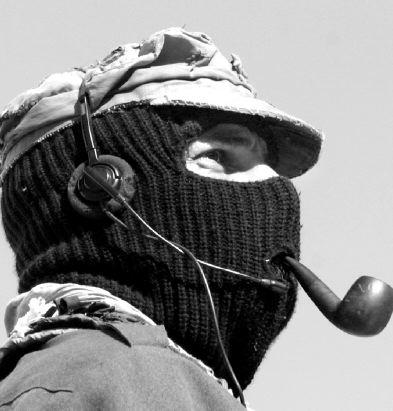 Originally aired on The Final Straw
Originally aired on The Final Straw
This past January 1st marked the 21st anniversary of the Zapatistas’ emergence. On New Year’s Day, 1994, masked guerrillas, some carrying wooden rifles, descended from the foggy mist of the Lacandon Jungle in southern Mexico. They called themselves, pardon the accent, El Ejercito Zapatista Liberacion de Nacional– the Zapatista National Liberation Army.
They took their name from Mexican Revolutionary Emiliano Zapata, who was betrayed and assassinated in the Revolution of 1914– his assassination marking a pivotal turning point. The ruling elite recuperated the revolution, and for 80 years continued to push the poor and indigenous off of their lands– all in the name of progress and profit.
Then, the same day that NAFTA came into effect, Zapatista rebels swept down out of the mountains, seized 12 towns, shot the corrupt officials, and chased off the predatory landlords. And then, in a masterful strategy, they held a press conference.
One of the masked guerrillas identifying himself as Insurgente Marcos would become their iconic spokesperson. That first day, when asked what the Zapatistas were fighting for, Marcos explained that they were not fighting for land or for freedom. They weren’t even fighting for their lives, as they knew from the moment they took up arms in rebellion against the government, they were, in his words, “already dead.” No, they were fighting against the proposition that they never existed. The powerful forces of global capital and corrupt officials could wipe them out, but the world would know they were here.
They were taking a stand against oblivion, being forced out of existence without so much as a bang or a whimper. They were gonna go out with a bang.
In 21 years, the Mexican government has revealed Marcos’ true identity several times. The last, they announced that Marcos was really Sebastian Guillen, a university professor. At one point, Marcos issued a communique requesting that the government request someone more handsome because women stopped writing every time officials announced his true identity as one ugly guy or another.
In one press conference, a government sympathizer called Marcos a coward for wearing a mask. Marcos explained that the Zapatistas feared that the government would terrorize their loved ones if their identities were revealed. When the government-sympathizer persisted, Marcos asked the press if they wanted him to remove the mask; the press urged him to leave it on. They told him that, so long as he wore the mask, so long as they had not seen his face, they could imagine that he was each one of them.
The Zapatistas have survived for more than 2 decades and have maintained the Zapatista Autonomous Zone, a geographical area where the Mexican government does not tread. It’s a world where “many worlds are possible.” They have accomplished this in the face of brutal repression, a concerted dirty war quietly supported financially and logistically by the United States.
After 21 years of struggle, the Zapatistas still represent the dignity of rebellion.
Their struggle is extremely relevant and significant for a number of reasons, but principally, I think, for putting the lie to the invincibility of the United States. Consider, when the Viet Cong defeated the U.S. super power, it was viewed as an anomaly. When the Cuban Revolution swept out a pro-U.S. dictator and stood in defiance of the U.S., it was seen as a singular event, not repeatable. When the Sandonsitas came to power in
Nicaragua, it was dismissed because it was too distant from the U.S.
The Zapatistas happened in Mexico, the closest neighbor of the U.S. Empire, and they have survived for 21 years, stronger than ever. No amount of financial aid, military advisers, and technical hardware can eliminate them. The Zapatistas remain a glaring, embarassing reminder of U.S. impotence, pointing to the objective reality that armed rebellion against tyranny cannot be stopped.
Which leads us to the question– where are the Zapatistas of Cleveland and Chicago, Oakland and New York, Minneapolis and Detroit? If untrained peasants from the Mexican south can wage a guerrilla war for 21 years against the world’s super powers, what chance would the oppressors have against the rest of us?
Libertad o muerte.
Este es prisionero anarchisto Sean Swain de la supermax de Ohio. Si su escuchando, su es la resistencia…
* * *
